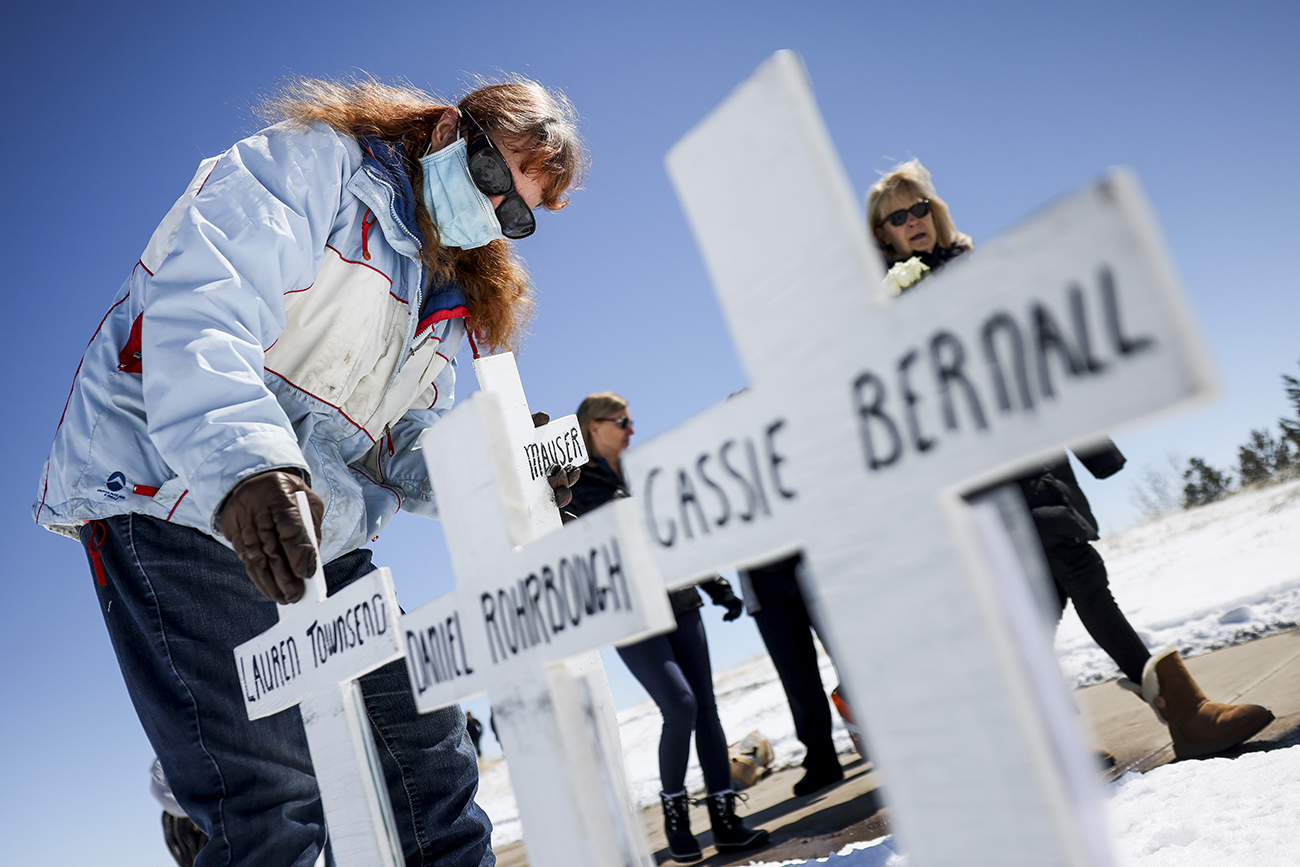Amid concerns about video game-inspired violence, a ‘Christian’ game slays ungodly enemies
This article originally appeared at Baptist News Global on April 26, 2024.
Twenty-five years ago, I sat in my living room as a junior in high school watching the Columbine shooting unfold. Seeing students my age filing out of the school, I had no idea how that moment would impact me or shape the narrative about violence in society for at least the next quarter century.
With Y2K approaching and white evangelicals fearing either the Tribulation or another four years of the Democrats controlling the White House, conspiracy theories began spreading about the hypothetical persecution of Christians. Youth pastors everywhere told the story of Cassie Bernall, the Columbine high school student who reportedly answered “Yes” when asked by the shooters if she believed in God prior to being murdered. And evangelical teenagers everywhere daydreamed of being shot and killed for God.
“It was a test we could all hope to pass, but none of us would want to take,” Michael W. Smith sang in his popular song “This Is Your Time,” inspired by Cassie’s answer. “Faced with the choice to deny God and live. For her there was one choice to make.”
With nightmares of martyrdom swirling through our minds, one question we all began to consider was who could commit such atrocities. And as we learned more about the Columbine shooters, people began blaming the shooting on violent video games since the Columbine shooters played “Doom.”

Rhonda Grindle places crosses with the names of the victims of the Columbine High School shooting next to the Columbine Memorial on April 20, 2021, in Littleton, Colorado. Twelve students and a teacher were killed in the mass shooting 22 years ago, which at the time was the deadliest school shooting in US history. (Photo by Michael Ciaglo/Getty Images)
The politics and psychology of blaming violent video games
One month after the Columbine shooting, Republican Speaker of the House Newt Gingrich claimed “Hollywood and computerized games have undermined the core values of civility.” In the years ahead, Democrats such as Hillary Clinton, Joe Lieberman and Barack Obama all called for further research to discover whether a reduction in violent video games could lead to a reduction in violent crimes.
While politicians have united across party lines in opposition to violent video games, health care professionals have been divided. The American Psychological Association wrote in 2015 that there is a link “between violent video game use and both increases in aggressive behavior … and decreases in prosocial behavior, empathy, and moral engagement.”
Additionally, the American Academy of Pediatrics admitted in 2016 that they are “concerned about children’s exposure to virtual violence and the effect it has on their overall health and well-being.”

Whitney DeCamp
But Whitney DeCamp, a sociology professor and an expert on criminology at Western Michigan University, suggests based on data gathered from more than 6,000 eight graders that the link between violent video games and violent behavior depends on whether the child lives in a safe or violent home.
“People who have close positive relationships with their parents are a lot less likely to engage in violence — regardless of whether they play video games or not,” DeCamp argues.
Also, a 2019 study in The Royal Society found: “There was no evidence for a critical tipping point relating violent game engagement to aggressive behavior.” According to their report, organizations such as the American Psychological Association that link violent video games to violent behavior are motivated by the “precautionary principle,” which they define as “an approach to mitigating societal harm that puts protections in place when there is a plausible risk.” Thus, they argue that the APA and others “err on the side of caution and warn to limit youngsters’ time spent playing video games.”
An American problem with a racial twist
According to the Small Arms Survey of 2017, “there are more than 1 billion firearms in the world, the vast majority of which are in civilian hands.” For every 100 U.S. citizens, there are approximately 120.5 firearms. The next closest country is Yemen, which has 52.8 firearms for every 100 citizens. For every 100 citizens of other nations such as Indonesia, Japan and Malawi, there is just one firearm.
With the United States having such a large percentage of firearms, it also has 18 times the number of gun-related deaths than the average rate of other countries, including 22 times more than the European Union rate and 23 times more that the Australian rate.
Given what DeCamp discovered regarding the effect that having positive relationships has on violence, it is no wonder that a country shaped by hierarchies of sex and race would include a racial component to its coverage of these stories.
“The media are far more likely to blame violent crimes of white people on video games than they are to blame violent crimes of Black people on video games.”
According to research led by psychological and brain sciences professor Patrick Markey and associate professor Erica Slotter of Villanova University, the media are far more likely to blame violent crimes of white people on video games than they are to blame violent crimes of Black people on video games.
In one of their studies that analyzed more than 200,000 news articles about mass shootings from 1978 to 2018, Markey and Slotter found U.S. media mentioned video games in stories about white shooters 8.5 times more than in stories about Black shooters.







Leave a Reply
Want to join the discussion?Feel free to contribute!